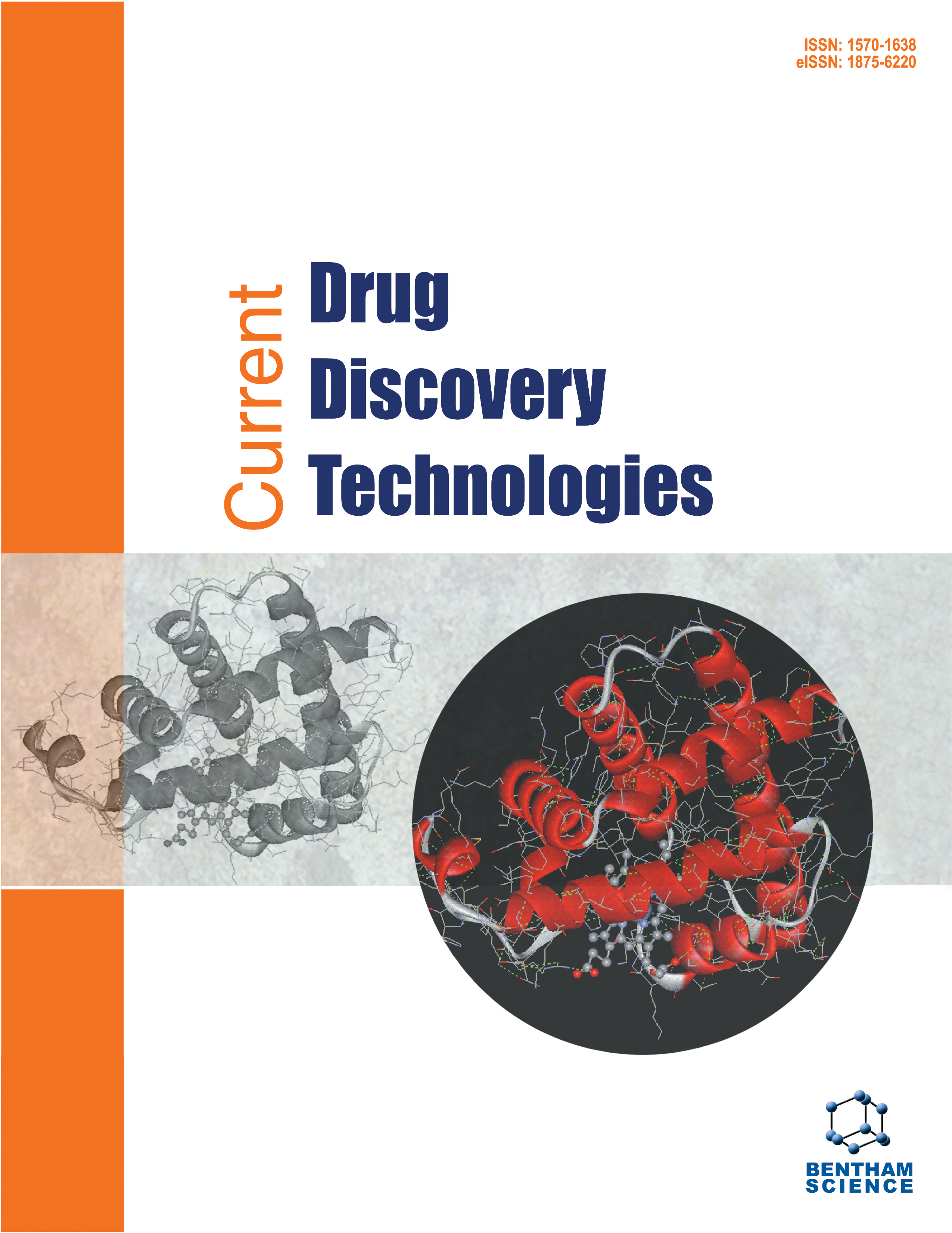- Home
- A-Z Publications
- Current Drug Discovery Technologies
- Previous Issues
- Volume 9, Issue 1, 2012
Current Drug Discovery Technologies - Volume 9, Issue 1, 2012
Volume 9, Issue 1, 2012
-
-
Editorial [ Bio-Markers as Tools For Discovery of New Psoriasis Therapies ]
More LessPsoriasis is a common chronic inflammatory condition of the skin that may have a significant impact on the quality of life of the patient. Effecting approximately 2% of the population, the onset of the disease is commonly before 35 years of age. With no cure and a significant proportion of patients finding their treatment unsatisfactory, there remains a clinical unmet need to discover and evaluate new therapies for the dise Read More
-
-
-
Preparation and Characterization of Solid Lipid Nanoparticles-A Review
More LessAuthors: Rabinarayan Parhi and Padilama SureshIn the present scenario, most of the developed and new discovered drugs are posing real challenge to the formulation scientists due to their poor aqueous solubility which in turn is responsible for poor bioavailability. One of the approach to overcome above problem is the packaging of the drug in to particulate carrier system. Among various carriers, lipid emerged as very attractive candidate because of its unique property of en Read More
-
-
-
Quercetin-Phospholipid Complex: An Amorphous Pharmaceutical System in Herbal Drug Delivery
More LessAuthors: Devendra Singh, Mohan S.M. Rawat, Ajay Semalty and Mona SemaltyDevelopment of amphiphilic drug-lipid complexes is a potential approach for improving therapeutic efficacy of the drugs by increasing solubility, release profile and oral bioavailability. Quercetin (3, 3', 4', 5, 7-pentahydroxyflavone), a polyphenolic flavonoid, shows several biological effects like anti-inflammatory, anti-cancer, antiproliferative, antimutagenic and apoptosis induction but its use is limited due to its low aqueous solu Read More
-
-
-
Structural Analysis of 2-Piperidin-4-yl-Actamide Derivatives for hERG Blocking and MCH R1 Antagonistic Activities
More LessAuthors: N. S. Hari Narayana Moorthy, Maria J. Ramos and Pedro A. FernandesIn the present investigation, a computational based structural analysis was performed on a series of 2-piperidin- 4-yl-acetamide derivatives to investigate the physicochemical features of the molecules responsible for the hERG blocking and melanin concentrating hormone receptor-1 (MCH R1) antagonistic activities. The QSAR models derived from MLR analysis were validated by various validation methods and they provided Read More
-
-
-
Antistaphylococcal Activity of Novel Salicylanilide Derivatives
More LessThis study examined the antibacterial properties of nineteen benzoxazole, isoniazid, ethionamide and salicylanilide derivatives against Staphylococcus aureus (S. aureus). It was found that three salicylanilide-derived compounds demonstrated antistaphylococcal activity: 5-Chloro-2-hydroxy-N-(4-(trifluoromethyl)phenyl)benzamide (5-Cl-4'-CF3- SAL), 4-chloro-2-(3-chlorophenylcarbamyoyl)phenyl)-2-(benzyloxycarbonyl Read More
-
-
-
Insight into the Biomarkers as the Novel Anti-Psoriatic Drug Discovery Tool: A Contemporary Viewpoint
More LessPsoriasis is a common chronic autoimmune skin disorder with T-cell mediated multifunctional complex pathogenesis along with genetic predisposition. Conventionally, many therapies are available for the management of psoriasis, but they have limited efficacy due to higher side effects. Over the last decade, one of the major efforts in psoriasis research has been made for the development of drug molecules by u Read More
-
-
-
Mice with Liver Composed of Human Hepatocytes as an Animal Model for Drug Testing
More LessAuthors: Katsutoshi Yoshizato, Chise Tateno and Rie UtohConventionally, rodents, mostly mice and rats, have been utilized as animal models for studying drug metabolism and toxicity of new medicines. However, there have been two major problems inherent to these models. One is that there are species differences in major enzymes responsible for drug metabolisms and detoxification such as cytochrome P450 between rodents and humans, and the other is that human hepatitis Read More
-
-
-
Translational Biology Approach to Identify Causative Factors for Rare Toxicities in Humans and Animals
More LessAuthors: Dale E. Johnson, Sucha Sudarsanam, Jonathan Bingham and Subha SrinivasanGenome-wide RNA splicing (with gene expression) can be used to discover variations that drive specific diseases and / or change the susceptibility in individuals to drug responses including tissue specific toxicities. Evidence linking causative SNPs to individual splicing differences between individuals is emerging and this may lead to a better understanding of susceptibilities related to rare drug-induced toxicities. The develo Read More
-
Volumes & issues
-
Volume 22 (2025)
-
Volume 21 (2024)
-
Volume 20 (2023)
-
Volume 19 (2022)
-
Volume 18 (2021)
-
Volume 17 (2020)
-
Volume 16 (2019)
-
Volume 15 (2018)
-
Volume 14 (2017)
-
Volume 13 (2016)
-
Volume 12 (2015)
-
Volume 11 (2014)
-
Volume 10 (2013)
-
Volume 9 (2012)
-
Volume 8 (2011)
-
Volume 7 (2010)
-
Volume 6 (2009)
-
Volume 5 (2008)
-
Volume 4 (2007)
-
Volume 3 (2006)
-
Volume 2 (2005)
-
Volume 1 (2004)
Most Read This Month
Article
content/journals/cddt
Journal
10
5
false
en


